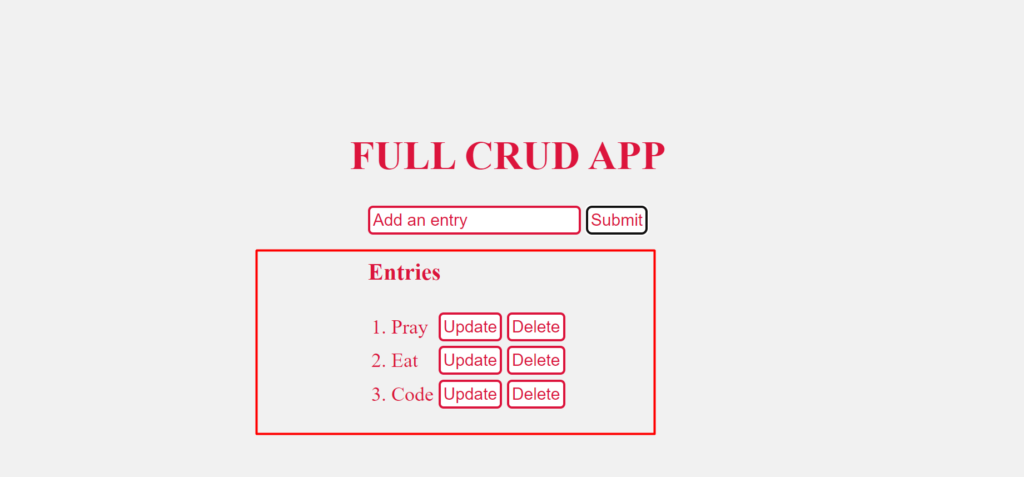
Learn to perform Create, Read, update, and Delete (CRUD) operations using OData services. Understand HTTP methods, data formats, and best practices
In today’s digital age, efficient data management is paramount for businesses and organizations. CRUD operations—Create, Read, Update, and Delete—are fundamental to interacting with databases. OData (Open Data Protocol) services provide a standard way to perform these operations over the web, facilitating smooth data manipulation and retrieval. This blog delves deep into CRUD operations in OData services, offering a comprehensive understanding of how to implement and utilize these operations effectively.
Understanding CRUD Operations



CRUD stands for Create, Read, Update, and Delete. These operations correspond to the basic functions required to interact with a database. Each operation is mapped to specific HTTP methods in OData services:
- Create: Adds new data to the database (HTTP POST).
- Read: Retrieves data from the database (HTTP GET).
- Update: Modifies existing data in the database (HTTP PUT or PATCH).
- Delete: Removes data from the database (HTTP DELETE).
Setting Up OData Service
Before diving into CRUD operations, it’s essential to set up an OData service. Here’s a step-by-step guide:
- Define Data Model: Create an Entity Data Model (EDM) that describes the structure of your data.
- Create Service Endpoint: Define the OData service endpoint that clients will interact with.
- Configure Routing: Set up routes to direct HTTP requests to the appropriate handlers.
Create Operation in OData
The Create operation adds new resources to the database. In OData, this is done using the HTTP POST method.
Example
To add a new record to the ‘Products’ entity set, you send a POST request to the service endpoint:
httpCopy codePOST /odata/Products
Content-Type: application/json
{
"Name": "New Product",
"Price": 29.99,
"Category": "Electronics"
}
The server processes this request and creates a new product in the database.
Read Operation in OData
The Read operation retrieves data from the database. In OData, this is performed using the HTTP GET method.
Example
To fetch all records from the ‘Products’ entity set, you send a GET request:
httpCopy codeGET /odata/Products
You can also apply filters, sorting, and pagination to refine your query:
httpCopy codeGET /odata/Products?$filter=Category eq 'Electronics'&$orderby=Price desc&$top=10
Update Operation in OData
The Update operation modifies existing resources in the database. In OData, this can be done using the HTTP PUT or PATCH methods.
Example
To update the price of a specific product, you send a PATCH request:
httpCopy codePATCH /odata/Products(1)
Content-Type: application/json
{
"Price": 24.99
}
The server updates the specified product with the new price.
Delete Operation in OData
The Delete operation removes resources from the database. In OData, this is done using the HTTP DELETE method.
Example
To delete a specific product, you send a DELETE request:
httpCopy codeDELETE /odata/Products(1)
The server removes the specified product from the database.
Advanced CRUD Operations
OData services also support batch operations, which allow you to perform multiple CRUD operations in a single HTTP request. This can significantly improve efficiency and reduce the number of network round-trips.
Batch Example
To perform a batch operation, you send a POST request to the $batch endpoint with a multipart MIME body containing multiple requests:
httpCopy codePOST /odata/$batch
Content-Type: multipart/mixed; boundary=batch
--batch
Content-Type: application/http
Content-Transfer-Encoding: binary
POST /odata/Products
Content-Type: application/json
{
"Name": "Batch Product 1",
"Price": 19.99,
"Category": "Books"
}
--batch
Content-Type: application/http
Content-Transfer-Encoding: binary
PATCH /odata/Products(1)
Content-Type: application/json
{
"Price": 22.99
}
--batch--
The server processes all the requests in the batch as a single transaction.
Best Practices for CRUD Operations in OData
- Use Proper HTTP Methods: Ensure you use the correct HTTP methods for each CRUD operation to maintain RESTful standards.
- Error Handling: Implement robust error handling to manage potential issues during CRUD operations.
- Security: Protect your OData services using authentication and authorization mechanisms to prevent unauthorized access.
- Performance Optimization: Use pagination, filtering, and sorting to optimize the performance of read operations.
- Documentation: Provide clear documentation for your OData service endpoints and operations to assist developers in integrating with your service.
Conclusion
CRUD operations are the backbone of data manipulation in OData services. Understanding and implementing these operations correctly is crucial for building efficient and robust applications. By leveraging OData’s standardized protocol, developers can create interoperable and scalable web services that streamline data exchange and enhance application performance. Whether you are a seasoned developer or new to OData, mastering CRUD operations is essential for harnessing the full potential of this powerful protocol.
Read Our blog here:-
Why Use SAP SuccessFactors: A Game-Changer for HR and Business Growth
How to Reset Your KIIT SAP Portal Password Quickly
Efficient Operations and Innovative Solutions with SAP Application Management Services








